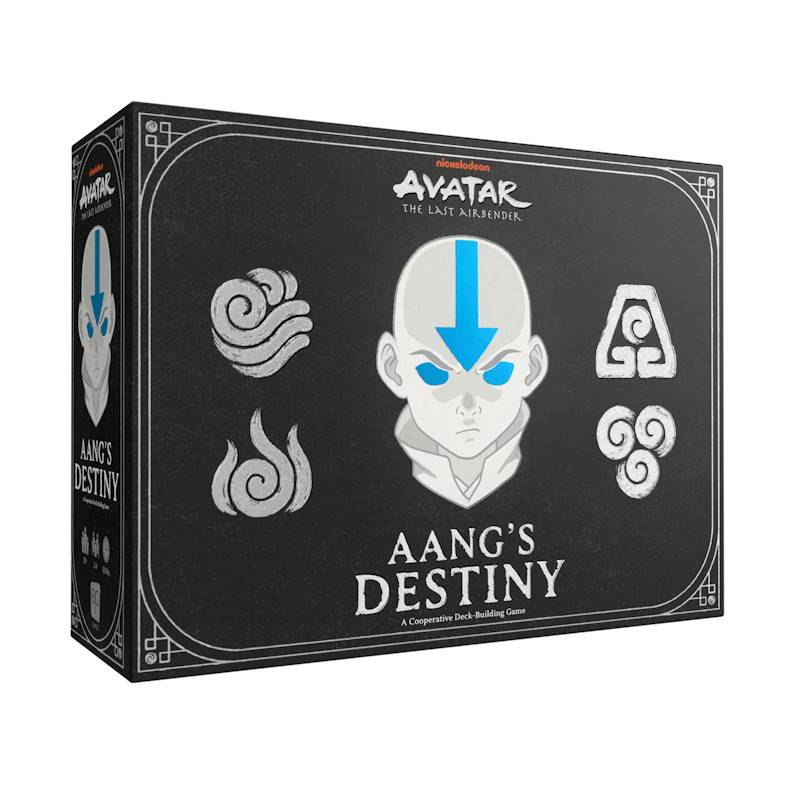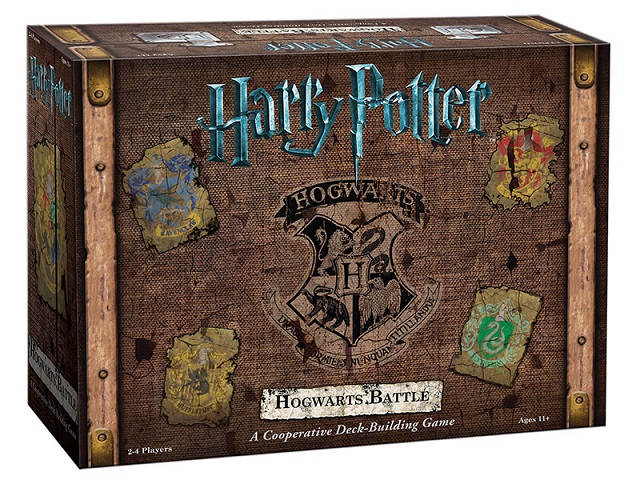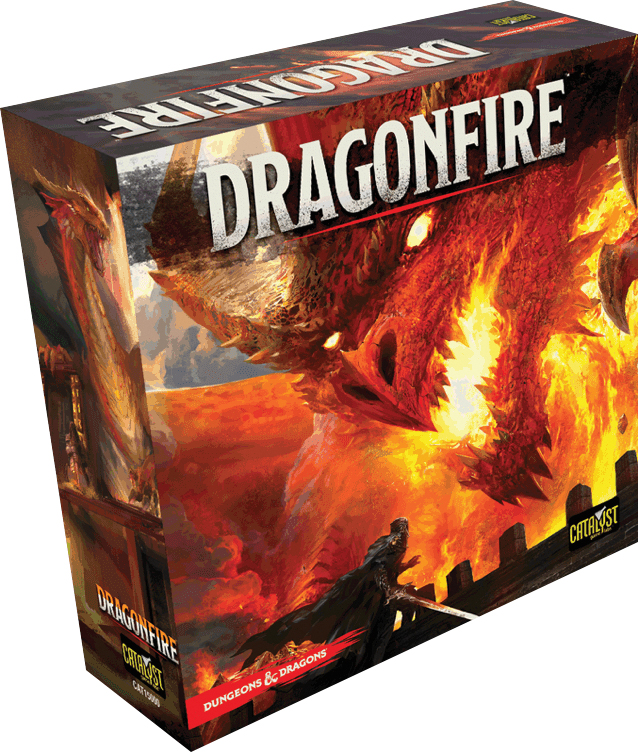Few animated series tell as good a story as Avatar: The Last Airbender, and, with Aang’s Destiny, you’ll get the chance to dance through the tale’s highlights in a cooperative deck-building adventure. This is a game built on good bones, as we’ll discuss later, so if you’re looking for a great time with the family or just a chance to reconnect with a beloved universe, read on.
Deck-building in Aang’s Destiny
Avatar: The Last Airbender – Aang’s Destiny (Patrick Marino) comes in with high stakes and meets them with solid fundamentals. This is a deck-builder and a campaign, albeit with a framework that allows picking any mission with minimal effort. See, ahead of every game, you’ll pick your character—for campaign purposes, I find it’s fun to stick with the same one and see your team through, but you can bounce around as desired—and grab their starting deck. Every  character is unique, and their innate special abilities will change how they interact with cards, so trying out them all is worthwhile as you settle into the campaign’s progressive challenges.
character is unique, and their innate special abilities will change how they interact with cards, so trying out them all is worthwhile as you settle into the campaign’s progressive challenges.
General gameplay runs like deck-building staples like Dominion (Donald X. Vaccarino) have done it for years. You’ll draw up a hand, which might get messed with before your turn comes around, and then play all the cards in it to either acquire new items and allies, buff your teammates with card draws or heals, or lay into the current challenge. The Fire Nation opposes you at every turn, damaging you or bumping their boat forward on the track towards ultimate victory.
Fail to defeat your adversaries or complete the challenge in time, and you’ve handed the Fire Nation a victory. And that’s, uh, bad.
Anyway, success in Aang’s Destiny depends on solid teamwork. You’ll need support and damage, you’ll need to tweak your strategy based on what cards flop into the market from the big deck, and you’ll have to communicate. This isn’t a heads-down co-op, but one where you’ll bounce ideas off one another just like the show’s heroes, which makes Aang’s Destiny a great choice for a game night where you actually want to talk to the people you’re playing with.
The core rules here aren’t heavy either, making Aang’s Destiny perfect for families and folks newer to deck-builders. The seven mission campaign—replayable with ease—scales up the challenge too, easing your group into the game’s flow and introducing rules at a pleasant pace. Quick setup time makes it easy to reshuffle should an attempt go awry, so you can battle back with new knowledge. Expect games to take around an hour, with later missions bumping up that clock, particularly if you have a full set of four players. Even so, this is a game playable on a weeknight, and you might chew through several missions in a single session if you’re bending like Aang ought to.
All told, Aang’s Destiny is a polished, well-produced game that’s a great play for Avatar fans and anyone looking for a deck-builder with a smidge more direction than ‘score victory points’. But if the Avatar theme does nothing for you, then read on, because Avatar Aang’s Destiny isn’t the only campaign deck-builder in town.
Harry Potter and the Campaign Deck Builder Code
If you want my opinion, the best Harry Potter board game out there is Argent: The Consortium, a slam-bang magic school worker placement blast that belongs in every collection. But Harry Potter: Hogwarts Battle (Sean Fletcher, Forrest-Pruzan Creative, Kami Mandell, Andrew Wolf) is a close second (and shout out to Harry Potter: Clue, where everyone dies). Published by the same folks that made Aang’s Destiny, Hogwarts Battle plays out in similar fashion. You’ll have Harry, Ron, Hermione, and Neville teaming up to take down villains before they spread enough evil to swamp the wizarding world.
Like Aang’s Destiny, Hogwart’s Battle plays out in a series of loosely connected scenarios, each one corresponding to a year at Hogwarts. You’ll have a market deck, somewhat asymmetrical powers based on your chosen character, and a high degree of teamwork necessary to overcome enemy assaults. Randomness, in both what items drop from the huge market deck and which villains appear in what order, keeps things interesting, and the game (plus the expansions) are suffused with the theme.
If you’re more of a wizard than a bender, you won’t go wrong here.
That said, if you’re eyeing these campaign-based deck-builders and then looking at Gloomhaven, Sleeping Gods, or one of the thousand other campaigns out there and wondering if you need another one in your life, here’s some big advantages Hogwarts Battle and Aang’s Destiny have:
- Both games are easy to set up. Your character decks can plop down around a central board populated with, you guessed it, a few more card decks. No miniatures, dungeon tiles, big rulebooks or convoluted scenario rules to parse.
- Have a player missing a session, or that’ll only be there from time to time? That’s fine! Neither of these games track player-specific progress from game to game (starting decks change based on the scenario, but your actions in one game don’t tie directly to another). Go from three to four players and back without a hitch, and without forcing someone to two-hand.
- Match the Game to the Group. You’re picking levels to play, and maybe you and your partner have beat the first six missions together, but want to play with another couple. Simply set up the first mission and play it with four, no need to break apart everything or break out new character sheets. It’s a breeze, and with the different characters, you’ll have a fresh experience every time.
All told, deck-builder campaigns are among the easiest options out there for groups that don’t want to commit to a huge endeavor but still want a sense of cooperative progress.
And once you’ve played these out, you can jump to the next level.
Cooperative Deck-Builders for the Pros
Both Aang’s Destiny and Harry Potter: Hogwarts Battle serve as great introductions to cooperative deck-building, and their final scenarios bring enough heat to keep you sweating. Still, if you’re a gritty deck-building expert, able to sleuth out combos and divine the right market buys in any situation, you might crave something harder. To that end, you have options.
 On one hand, there are the living card games (dominated by Fantasy Flight Games) that we’ve talked about before, like Marvel Champions, Lord of the Rings, and Arkham Horror. These are deep wells with difficulty you can tweak, a bevy of expansions to acquire should you find love in the base game boxes, and you probably already know all about them.
On one hand, there are the living card games (dominated by Fantasy Flight Games) that we’ve talked about before, like Marvel Champions, Lord of the Rings, and Arkham Horror. These are deep wells with difficulty you can tweak, a bevy of expansions to acquire should you find love in the base game boxes, and you probably already know all about them.
Similarly, Astro Knights and Aeon’s End are classic games without big IP cloaks, letting the designers play with fresh mechanics and story unencumbered by what’s come before. Aeon’s End: Legacy even creates a true long campaign with narrative, if you’d prefer tighter threads tying your games together.
Step beyond those, however, and you get to the deck-building wilds, where things get intense.
Take XenoShyft, originally released in 2015 by CMON. A tough-as-nails deck-building take on Aliens, the Xenoshyft line has received a slew of standalone sequels and expansions, each building up the invaders and improving interaction. XenoShyft lets you, for example, buy cards for other players, a hard choice that reduces your ability to slay the monsters barreling down your individual lane. Do you buy up defenses, weapons, or bank on surviving long enough to invest in better buy power for the next round?
Or swap the science for fantasy and jump into 2017’s Dragonfire, a D&D deck-building co-op with an optional full campaign. You’ll have to work together to defeat goblins and, perhaps obviously, dragons. You’ll level up, venture into cities like Baldur’s Gate, and probably wind up on the wrong side of a mind flayer. While Xenoshyft plays great at two, Dragonfire fits best with a full four, though expect a game to run nearer two hours unless everyone is as quick as a rogue with their plays.
defeat goblins and, perhaps obviously, dragons. You’ll level up, venture into cities like Baldur’s Gate, and probably wind up on the wrong side of a mind flayer. While Xenoshyft plays great at two, Dragonfire fits best with a full four, though expect a game to run nearer two hours unless everyone is as quick as a rogue with their plays.
While many of these can be played solo by controlling two (or more) characters, if solitaire is your jam, you can get a great, epic deck-building fix with Mage Knight. This giant game comes packed with scenarios and unique challenges, forcing you to find clever ways to annihilate monsters, level up, and defend, siege, or outright conquer whole realms. If you’re angling towards a quiet evening of adventure with yourself and a mug of something warm this winter, Mage Knight ought to be on your list.
A Great Draw
The through line from Avatar Aang’s Destiny to Mage Knight is a sign of our hobby’s scope, but also the opportunity to walk family and friends into board gaming with compelling ease. A newbie with a passing interest in Avatar: The Last Airbender can take Avatar Aang’s Destiny from start to finish and end with the skills necessary to jump all over the deck-building or tabletop gaming world, and have a great time while doing it alongside more experienced players.
A gateway game that gets you in proper playing shape at its close?
Good stuff.
